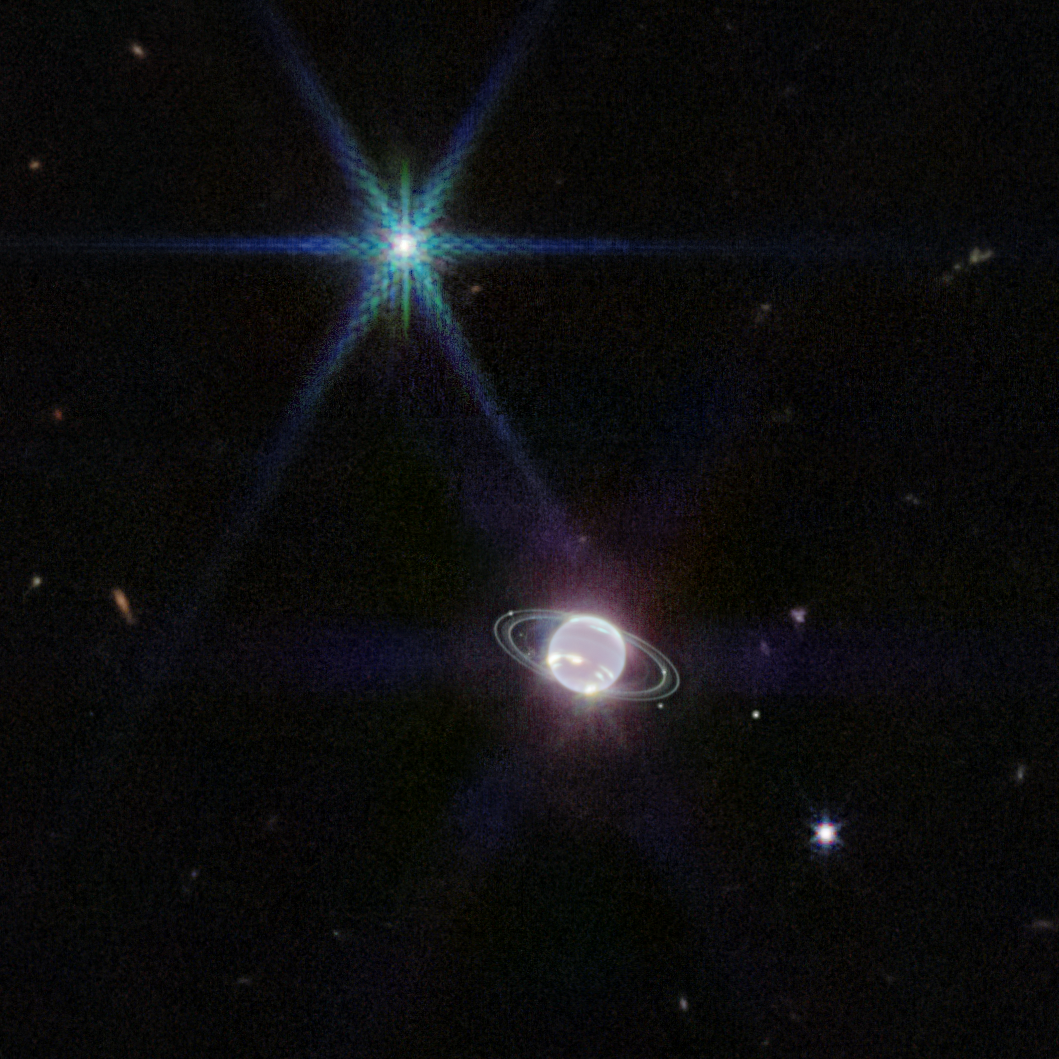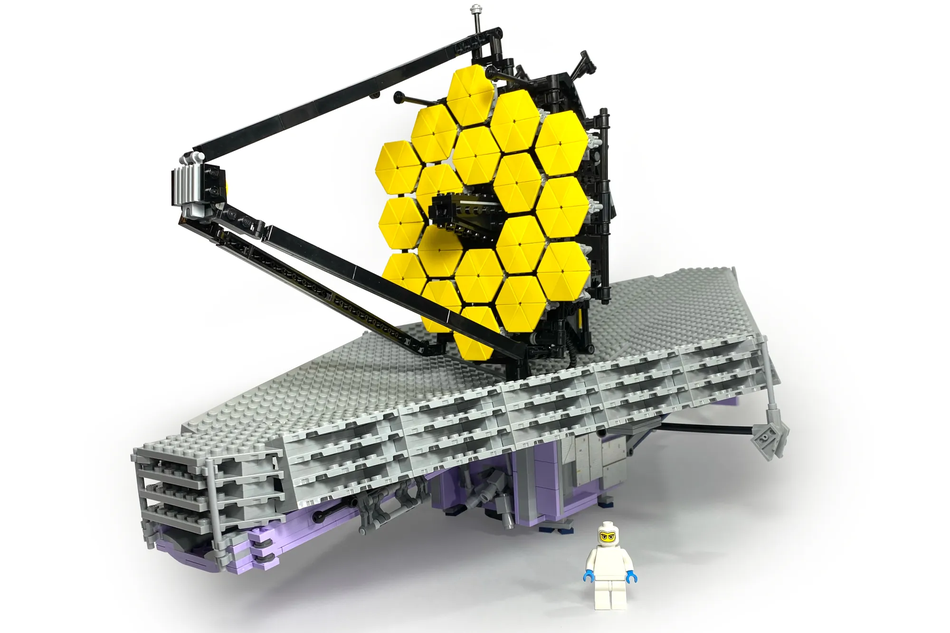Nepture Like Never Before Seen
Neptune in IR (credit: NASA/JWST)
The James Webb Space Telescope (JWST) turned it sights on the giant planet, Neptune. It turns out more beautiful than ever before before. Not only did the telescope's infrared (IR) sensors capture the planet in light pale purple-gray tones but 7 of its known moons as well as Neptune's brilliant, glowing rings appear.
According to the NASA announcement, the space observatory captured the clearest view yet of the distant planet. The last time the rings were viewed was when the Voyager 2 probe flew by on its way into interstellar space. Heidi Hammel, a NASA manager and scientist said: It has been three decades since we last saw these faint, dusty rings, and this is the first time we see them in the infrared.
Neptune is characterized as an ice giant due to the chemical make-up of its interior. The planet's signature blue appearance, first seen by the Hubble Space Telescope in visible light, is caused by gaseous methane in the atmosphere. The cameras on the new observatory views objects in the near-infrared light so the giant planet does not appear blue. To the JWST, methane absorbs red and infrared light so Neptune is dark at these wavelengths, except where high-altitude clouds are present. These methane-ice clouds are seen as bright streaks and spots, reflecting sunlight.
Webb also imaged 7 of Neptune’s 14 known moons. Dominating this new view is a bright, star-like point of light, Neptune’s strange moon Triton. Triton is covered with a frozen nitrogen sheen that reflects nearly 70 percent of the sunlight that hits it even at the great distances of the outer solar system. The large moon outshines Neptune because the planet’s atmosphere is darkened by methane, absorbed in the infrared. Triton's orbit is equally odd as it is orbits the planet in a retrograde direction, ie. backwards. The moon may have originally been a gravitationally captured object from the Kuiper Belt at the dawn of the solar system's formation.


Neptune with Triton, moons, and rings (credit: NASA/JWST) Lego Webb space telescope toy concept (credit: Lego Ideas)
If there is a budding astrophysicist, star-gazer, or photographer in your midst, here is something for them. If enough support is shown, Lego-Ideas is considering the production of a Webb replica kit, complete with all the telescope's components, to assemble. That seems like a fine idea to help foster creativity and wonder about such discoveries.
The new observatory will continue to further study the Neptunian system so expect even more stunning views to come. Everything looks different when you peer at them with 'new eyes'. WHB